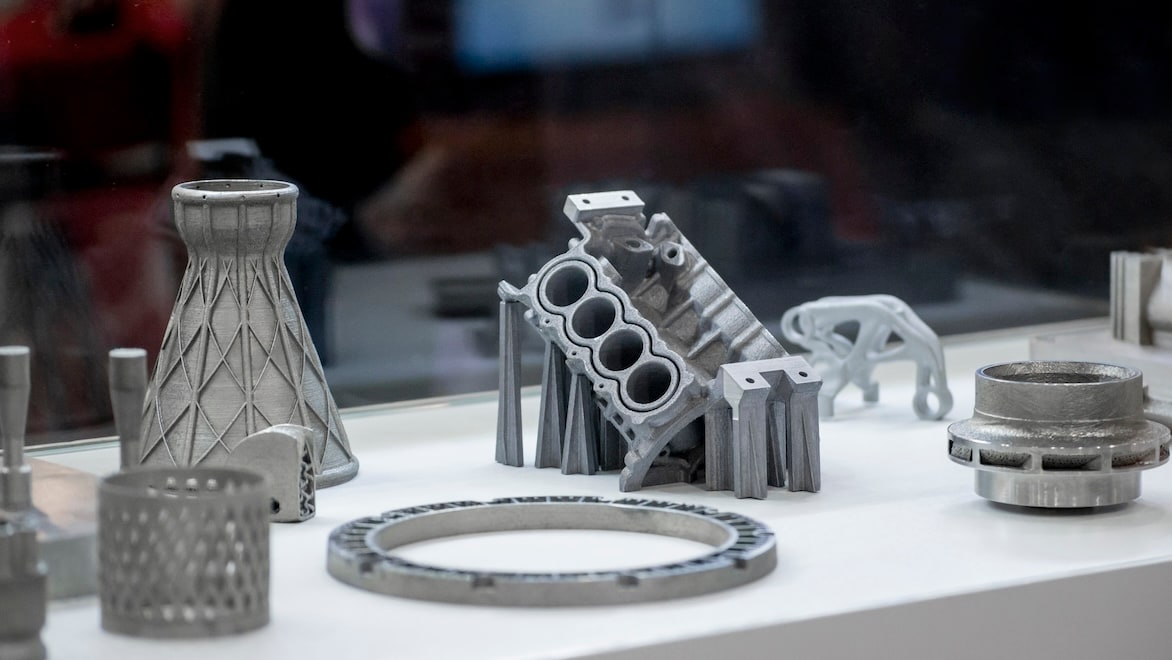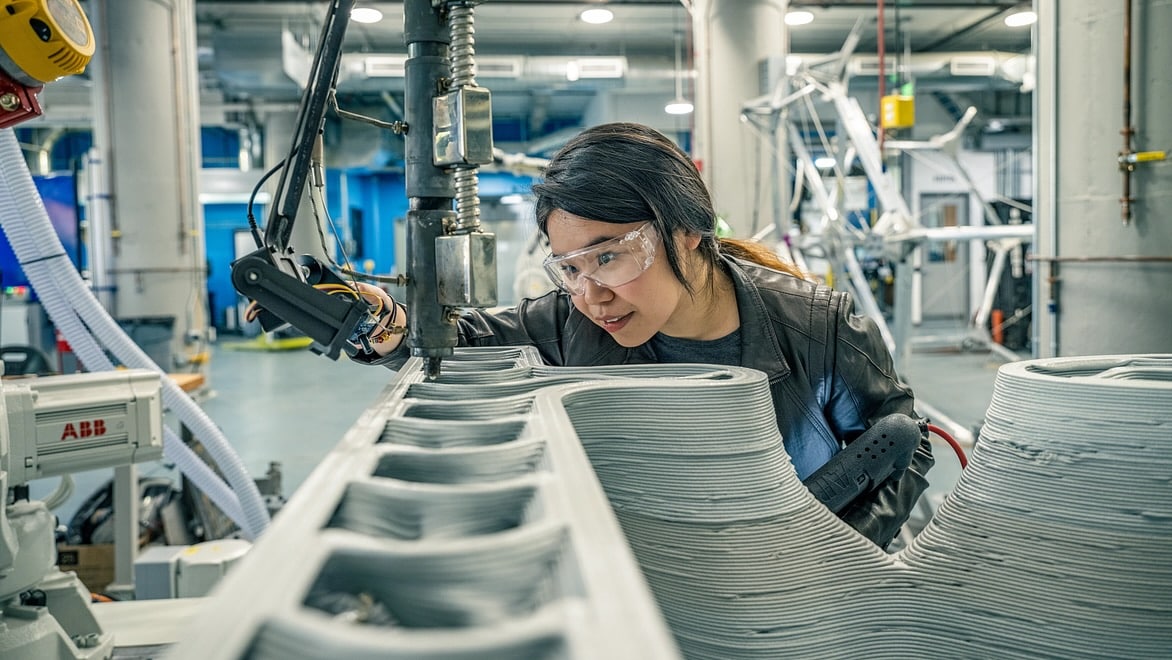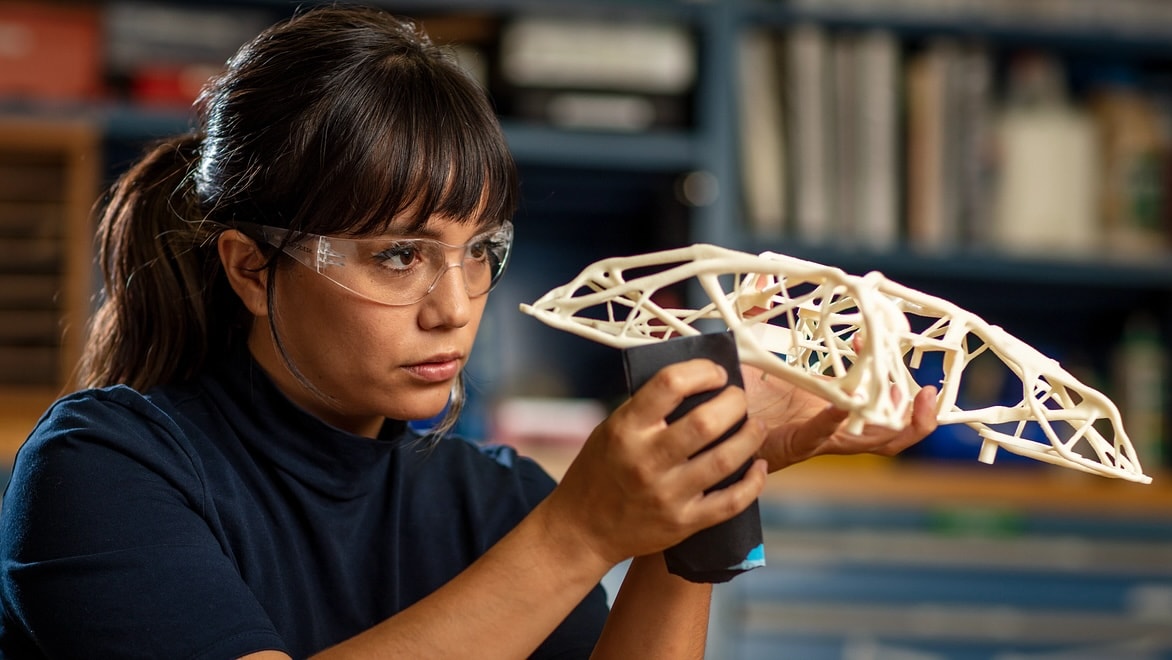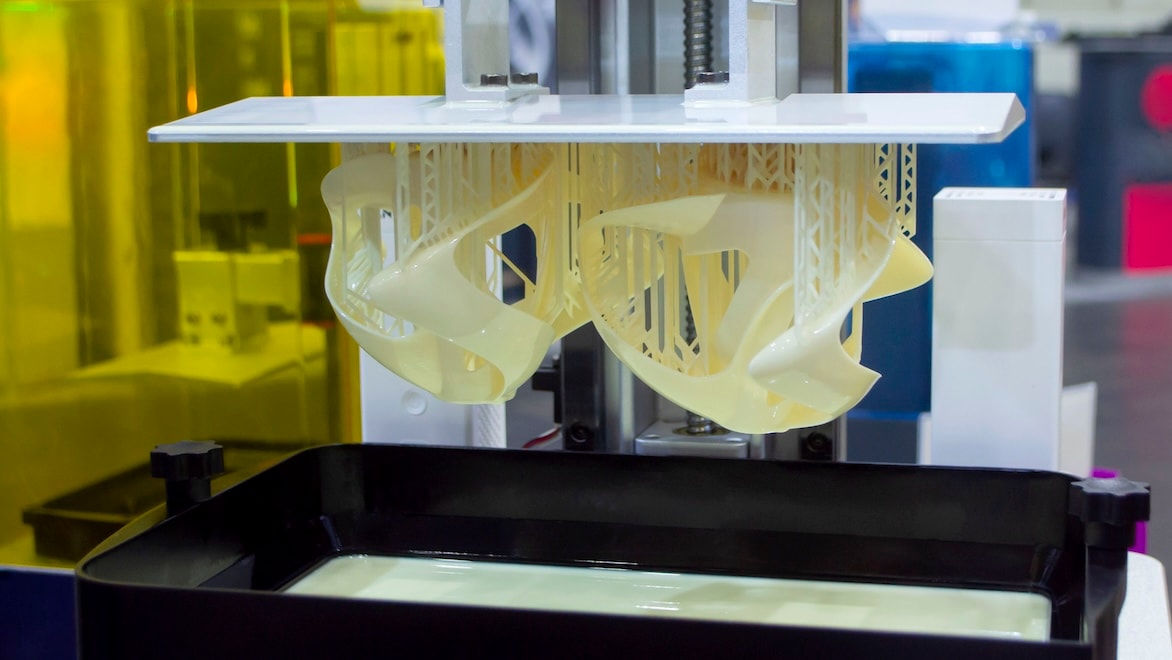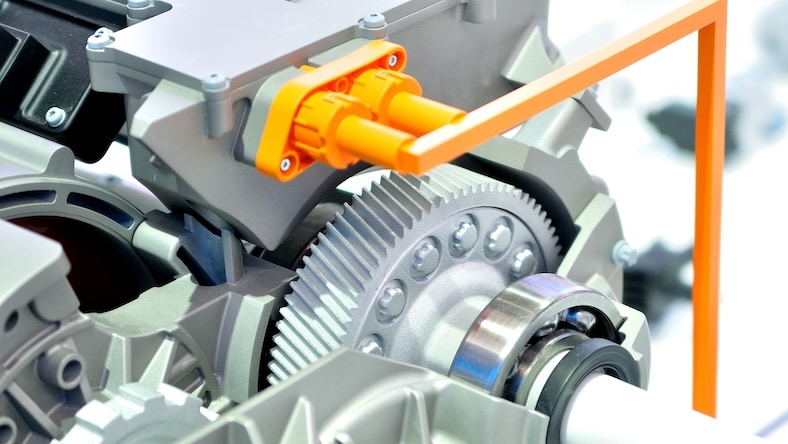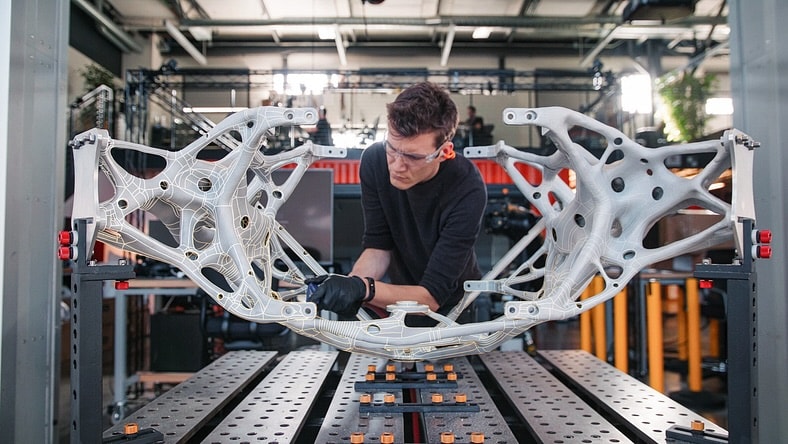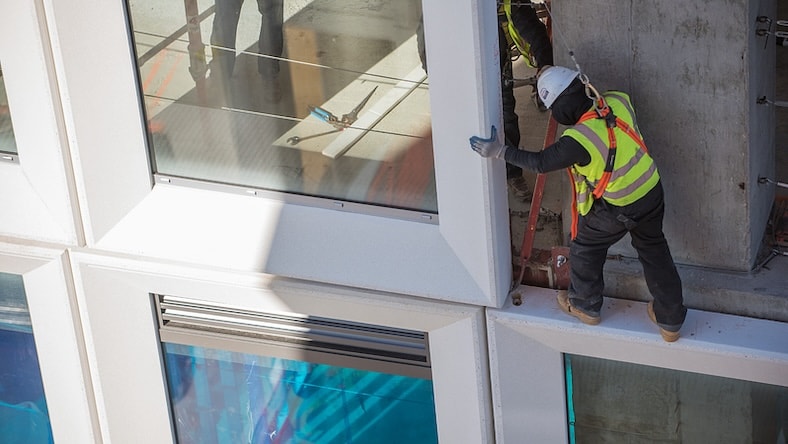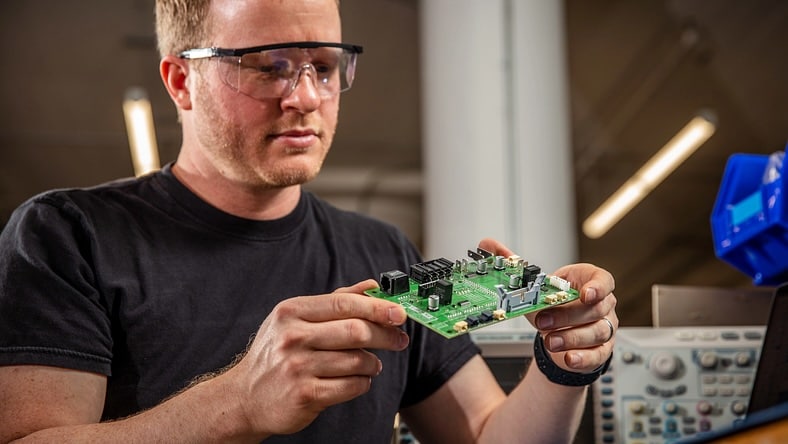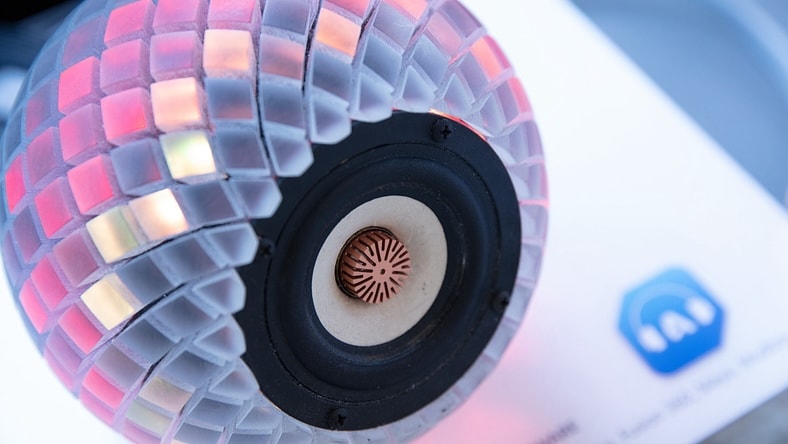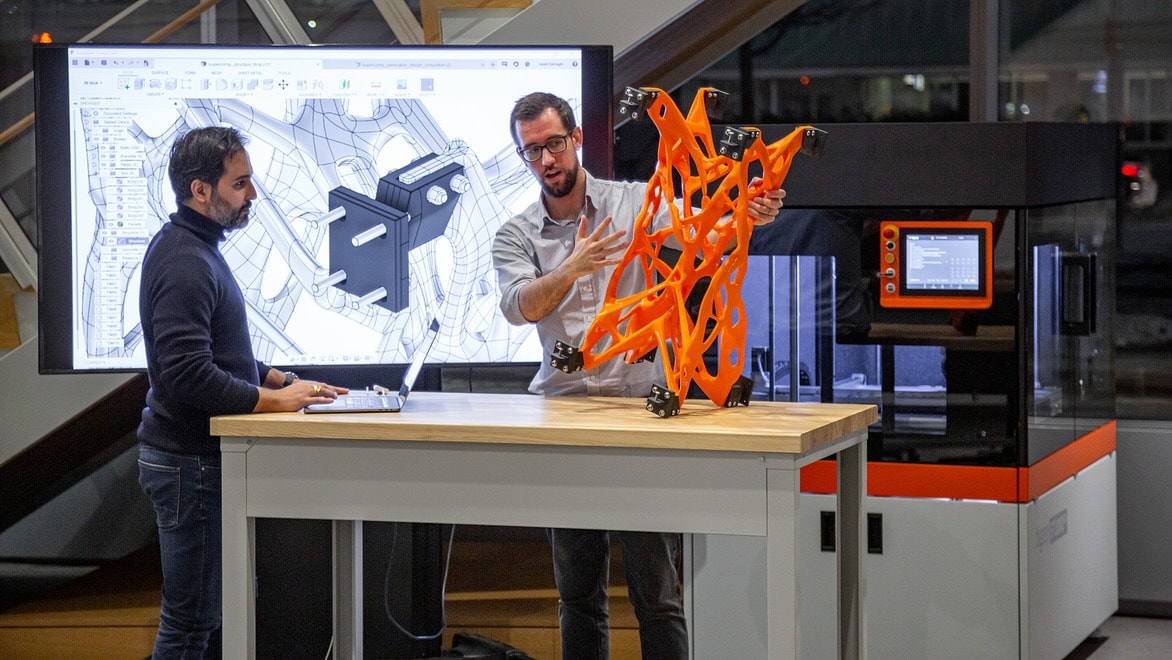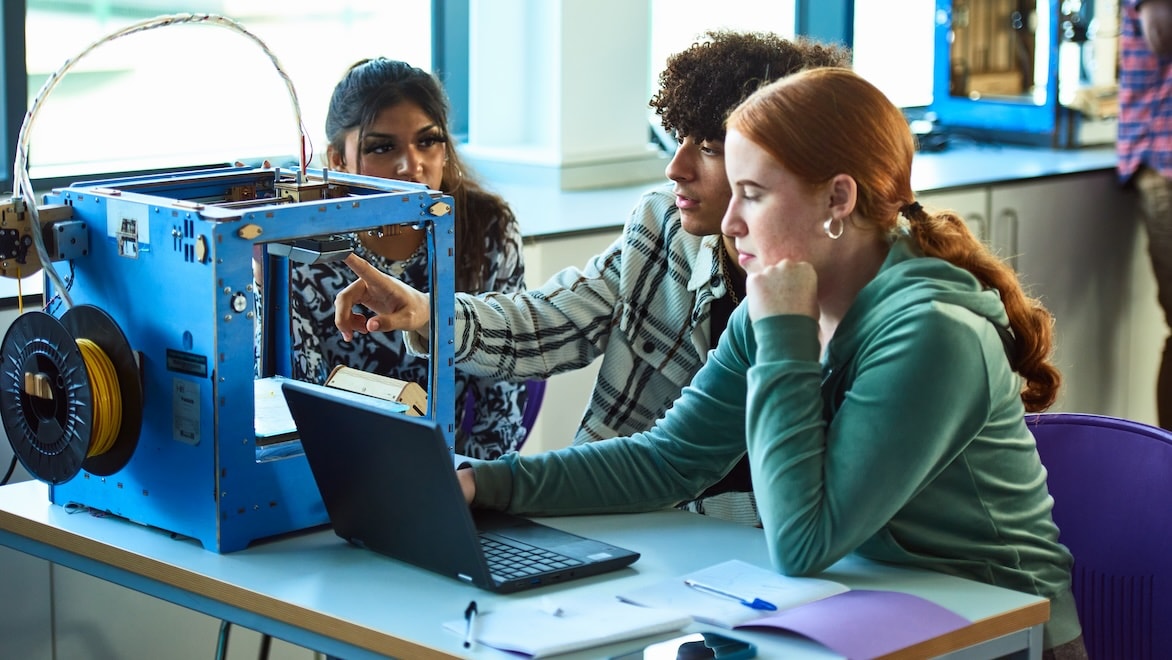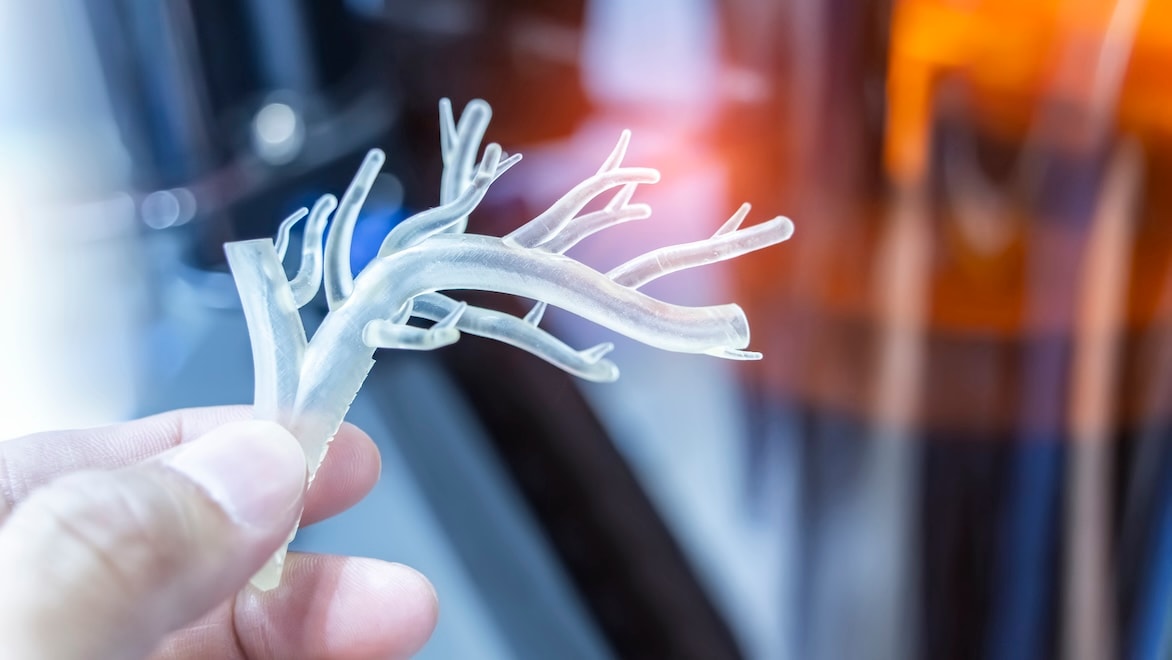& Construction

Integrated BIM tools, including Revit, AutoCAD, and Civil 3D
& Manufacturing

Professional CAD/CAM tools built on Inventor and AutoCAD
3D printing is the process of adding material to a structure, using an extruder or printhead that adds material by heating, melting, or applying pressure, building an object one layer at a time. 3D printing is a type of additive manufacturing.
3D printing captured the world’s attention in the 2000s as the first consumer models arrived on desktops, but its history goes back much further. Born as a concept at the close of World War II, rudimentary progress was made until it caught on in manufacturing in the late 1980s.
For a few decades, additive manufacturing and 3D printing were strictly heavy industry technologies—printers were large devices costing hundreds of thousands of dollars. But open-source software frameworks and the rise of 3D digital design in the late 1990s and early 2000s prompted a wave of innovation, with additive manufacturing shrinking down to the scale of desktop inkjet printing.
Since the early 2010s, 3D printing has found its groove and is now a fixture in both large and small factory floor processes and environments. As materials science has improved, 3D printing technology has advanced in lockstep.
Powerful product design and engineering tools for 3D mechanical design, simulation, visualization, and documentation.
Get Inventor + AutoCAD + Autodesk Fusion + more—Professional-grade tools for product development and manufacturing planning.
Overall, 3D printing is characterized by being smaller, lighter, faster, and more nimble than more traditional manufacturing methods—here’s how:
From concept to execution, traditional manufacturing works by designing and building molds and geometries for CNC machining and milling—a lengthy process. A 3D-printed object can be designed, sent to the device, and created in hours or minutes depending on its complexity.
Finding out that a geometry doesn’t work after a product is in production can be expensive and disruptive—it’s much better to identify what to improve from a single rapid prototype. Small adjustments can be made iteratively until you settle on the perfect design, all in far less time than traditional manufacturing.
The consumer 3D printing market has democratized manufacturing with the widespread adoption of low-cost, compact devices. Ever-smaller players help establish new, innovative techniques and materials that act as a rising tide, elevating the industry as a whole.
Artisanal and specialist products aren’t suited to mass manufacturing because smaller production runs can drive the economics of manufacture and supply out of reach. 3D printing lets you iterate and endlessly customize a design, making as many or as few of a unique product as your market demands for the same per-unit cost.
Traditional manufacturing like milling and machining is subtractive—it starts with raw material and removes everything not needed for the final shape, creating waste in the process. Because 3D printing adds only the material needed for the final shape, there’s no large off-cut volume and far less waste.
Thanks to the speed and efficiency of print devices and the relatively low cost and handling of materials, 3D printing is extremely cost effective. Whether it’s producing final products as a small provider or concepting and designing faster in heavy industry, 3D printing is contributing to the bottom line for countless producers.
3D printing starts with a digital model of a design, be it a desk toy, car part, skyscraper, or airliner. When you want to build it, it’s the equivalent of clicking “print” to send a document to an inkjet printer.
The 3D print software arranges the geometry of your design into layers or “slices,” calculating how much, where, and in what style the material is applied to either the substrate or the previous layer. The dimensions and parameters of each slice are interpreted by the printhead or extruder driver as coordinates on the object, and it moves back and forth across the surface applying material with the correct thickness, speed, and position to create the shape one layer at a time.
Depending on the method or material used, there’s usually a cooling or setting period, then your object or part is ready for use.
Because you can print anything from a plastic pencil caddy to a house, the types of 3D printing are almost as varied as the objects they can make. New methods are emerging all the time, but some types of 3D printing include:
Common desktop 3D printing uses plastic filaments that are either melted into liquid form or heated to be more pliable. Vat polymerization methods like stereolithography (SLA), digital light processing (DLP), and liquid crystal display (LCD) use light to set or “cure” each liquid filament layer. Heated filament methods include fused filament fabrication (FFF) and fused deposition modeling (FDM).
Using metals or plastics, powder bed fusion spreads or “wipes” a layer of material over the print bed, using a laser to selectively fuse specific points of the material to the next layer as it’s applied. When complete, the unfused powder is discarded, leaving the final geometry.
Sometimes material can’t be heated up, melted, or otherwise treated to make it sticky enough to bond with the previous layer, so the extruder applies a liquid binding agent along with the powdered form of the construction material.
Rather than applying material directly to the print bed or previous layer, jetting completes the next layer by spraying or dripping the material onto the surface, with exposure to light curing it as it adheres. Jetting in 3D printing is a common alternative to injection molding techniques because it allows fully textured finishes, realistic color, and multiple materials.
Also called selective laser sintering (SLS), sintering applies a layer of material, using a laser to trace it to bind it to the layer below as it does so. SLS tends to offer more precision than methods like fused filament fabrication (FFF) because it uses a high-powered laser to fuse fine powder particles layer by layer, resulting in highly detailed and accurate parts with complex geometries.
The industrial beginnings of 3D printing used metals and hardy polymers and plastics on machines with large build areas/print beds and extruders able to handle heavy designs. Almost every type of metal can be 3D printed because of softening or melting properties, including stainless steel, titanium, aluminum, nickel, silver, and gold.
As smaller, more portable 3D printer models became available, materials shifted to new classes of plastics like PLA, ABS, PETG, TPU, Nylon, ASA, and PVA. Tomorrow’s 3D printing promises even more as additive processes advance to include materials like concrete, wood, and organic materials.
Just as 3D printing methods and materials vary, so do the printers themselves. A fused deposition modeling (FDM) 3D printer creates objects by extruding and depositing melted thermoplastic filament layer by layer, following a digital model, to build up the desired shape. A stereolithography (SLA) printer uses a laser to cure and solidify liquid resin layer by layer, creating highly detailed and smooth objects based on a digital model.
Selective laser sintering (SLS) printers use lasers to sinter powdered material, typically nylon or other thermoplastics, layer by layer to create strong and complex objects directly from a digital model. Polyjet printers spray photopolymer resin and cure it with ultraviolet light for higher detail, and binder jetting printers spray the binder agent onto powder, ideal for casting molds.
Printers that use methods like electron beam melting and selective laser melting are better for high-precision metal objects. For rapid prototypes, methods like continuous liquid interface cure resins continuously and laminated object manufacturing stacks adhesive-coated layers to build objects.
3D printing is already entrenched in several fields, with many innovations cross-pollinating to others.
For most of the automotive industry’s history, designers working on new models have used analog methods. 3D modeling combined with 3D printed prototyping can make concept design faster and more cost effective.
Performance versus mass is the defining challenge of air and spacecraft design. Aerospace designers use tools like generative design and 3D printing to develop objects with extraordinary complexity additively.
Research in 3D printing living tissue is ongoing, while the customization potential of 3D printing puts more medical implants and prosthetic devices within reach for many patients.
Construction projects exist as detailed 3D designs before breaking ground. Producing scale prototypes or models of these designs is easy using 3D printing.
One of 3D printing’s advances is multi-material production. For electronics, it might apply the polymer board, metal wiring, ceramic capacitors, or resistors together in each pass of the extruder.
3D printing makes it easier for consumer product designers and manufacturers to create and test prototypes. It also enables small-batch and custom manufacturing.
The biggest limitation in 3D printing is its relative newness compared to traditional manufacturing methods like milling and molding. Though new materials and technologies are emerging, the medium is still mostly restricted to metals and plastics for widespread applications.
Despite the MakerBot-inspired revolution, industrial or production-scale 3D printing is also out of reach for smaller manufacturers. Producing a single object takes time depending on the complexity, and the speed can’t compete with high-volume or scalable manufacturing using traditional techniques.
Depending on your skill level and the type of work you want to do in 3D printing, there’s a world of training available. Platforms like Coursera, Udemy, and LinkedIn Learning can teach you the fundamentals, and technical college and university courses incorporate 3D printing into larger studies around manufacturing—including related areas like materials science and 3D design.
You can also find thriving communities online that offer less formal learning and practical experience as you share and trade designs and tips. The Autodesk Community and forums for products like Fusion are good starting places. Industry associations also provide certifications to formalize and expand your knowledge.
Research and innovation are expanding what 3D printing can do all the time. One of the most promising developments is multi-material printing, where an entire structure can be made in a single process with different materials in situ. Think of the wall of a building coming from a 3D printer with HVAC conduits and electrical wiring already built in.
Experiments into printing organic structures like blood vessels or bones represent the future when injured or defective parts of the body can be replaced with 3D-printed structures using the patient’s genotype.
Several of the methods mentioned above, like liquid interface production or high-speed sintering, are increasing the speed of production—3D printing will one day give traditional methods a run for their money.
Autodesk’s Technology Centers are vibrant, collaborative think tanks that help people imagine new possibilities in digital design and fabrication, then make them reality.
A hands-on tutorial repurposing a Fusion digital design into one of the industry standard file types used to integrate with 3D printers.
Understand the most common problems with 3D printing processes and how to navigate them to get better performance.
3D printing is an additive manufacturing process where material is applied one layer at a time to create an object. A print head/extruder manages the delivery and placement of the material, interpreting the digital design into coordinates that show where to place it.
The simplest or smallest shapes can take less than half an hour to print. But companies and scientists around the world have 3D printed bridges, houses, cars, or boats, which can take several days. Build time depends on the size, but also variables like materials and complexity.
Conceptually, material science would allow the creation of the molecular/structural basis for anything, so the answer is a theoretical “yes.” However, there’s a long way to go to realize the full potential beyond common materials like plastics and metals.
Scalability, especially compared with more established methods like milling and molding, is the biggest limitation facing 3D printing. It’s also a more expensive process per unit at the scale needed for commercial manufacturing—and the speed of production restricts it to either small production runs or rapid prototyping.
After creating your model in CAD software, you can export it to a common file type that integrates with 3D printer software, bridging the gap between your on-screen render and the final product.
Cost depends on the size, complexity, and materials. Small polymerization projects can cost little more than the raw materials, but 3D-printed engines, luxury yachts, and construction projects can cost millions.
